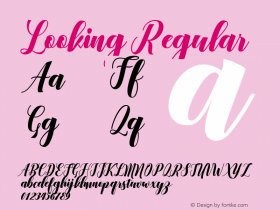
Last month I reported about the beautiful Fontface posters by Spanish multi-disciplinary design studio Atipo. I was recently notified that a numbered limited edition of 50 posters each (photo prints on Fuji) are available for purchase from their online shop. If you buy the full set of four you only pay for three.
This time I would like to showcase Grafilm, another one of their type-and design-related projects. Grafilm is a series of ten new movie posters for classic films, each one interpreting the graphic style of an iconic graphic designer.
grafilm from atipo on Vimeo.
Grafilm is one of the self-initiated experiments produced by Atipo in the first year after setting up their studio. Unlike other projects like Fontface and Calendas which were conceived and developed during that particular period, Raúl García del Pomar and Ismael González had Grafilm in mind even before joining the studio. The two partners both love movies, and were looking for a way to pay tribute to the medium on the one hand, and to their profession on the other hand. There have been a number of recent projects re-imagining movie posters in a novel way – for example the I Can Read Movies spoof book cover series by Spacesick and Olly Moss' 8 Films in Black and Red which were both discussed on The FontFeed. However most of these poster series are interpreted using the particular graphic style end with the distinct personality of the designer creating the series. Atipo approaches their Grafilm project from an opposite point of view. What would happen if they could choose amongst a list of iconic designers to make new posters for classic films they like?


How did you select the films?
"It was a parallel process. The original criterion was our personal preference – what movies do we like? Yet equally important was that we were doing a tribute to classic films. Many of the film poster reinterpretations are based on films from the last ten years, and we wanted to veer away from that. The second stage was making a list of our favourite designers, then trying to match them to specific movies. During this process the list was reduced to ten posters. The resulting selection is neither our ten absolute favourite movies, nor our ten absolute favourite designers, but rather a diverse selection of styles and periods that we both love."


On what basis did you couple designers to specific movies?
"Actually there was no real methodology. In some cases we had a particular film in mind and searched for a designer whose graphic style would nicely complement it. In other cases we did exactly the opposite, trying to find a film to match a specific designer. Sometimes the connection was really obvious, like for example coupling Jim Flora to Some Like It Hot. Other connections originated in a more rational way, like for example Josef Müller-Brockmann and The Lady From Shanghai.. Because he was a proponent of the International Typographic Style Müller-Brockmann could have designed a poster for any movie, so we looked for a film where a visual link could be made. Truth to be told in a couple of posters that link is not obvious. The references to the movies in the poster designs are as varied as the designers' styles, ranging from purely conceptual to more aesthetic – inspiration could come from a specific image as well as from the general idea behind the film."

How were the posters produced?
"We tried to stay true to each designer's technique, but without being obsessive about it. Almost all the posters were started with manual production processes – ink, paint, silk-screen printing, modelling, … – then transferred the artwork to the computer and completed the posters digitally. Originally we wanted to make this a silk-screen print series, but the diversity of the posters led us to switch to digital printing."
"Producing the typography was one of the challenging yet fun aspects of this project. We ended up custom lettering several posters. The rough brush letters for The Seventh Seal were painted by hand. For The Hustler we redrew the letters in the spirit of Saul Bass, taking our cue from his iconic posters like The Man With the Golden Arm. The bouncy Latin serif letters on Some Like It Hot were hand painted, and are loosely based on Nick Curtis' Flora Dora which mimics the typical style of Jim Flora. For Twelve Angry Men we wrote the film title in energetic and angular handwriting, and for The Maltese Falcon we combined a mixture of lettering styles used by Cassandre on his seminal posters. The end result looked so interesting that developed the alphabet into a full font, which will be made available at a later point."
The Posters

The Maltese Falcon, John Huston (Warner Bros, 1941).
A.M. Cassandre (1901–1968)
Art Deco FontList
"A.M. Cassandre is considered by many to be the father of poster art, and The Maltese Falcon is the movie that marks the beginning of the film noir genre. The falcon's iconic image proved to be the perfect starting point to recreate the cubist style so typical of Cassandre."

The Lady From Shanghai, Orson Welles (Columbia Pictures (1947).
Josef Müller-Brockmann (1914–1996)
Basic Commercial/Standard
"We are convinced that the legendary ending of the film, the final mirror scene in the funhouse, would probably have led Müller-Brockmann to this clean, modular design solution."

The Seventh Seal (Det sjunde inseglet), Ingmar Bergman (Svensk Filmindustri, 1957).
Henryk Tomaszewski (1914–2005)
Rough Brush Scripts FontList
"We simply love the expressive power of Polish poster art. The Seventh Seal is a dense and complex film that would fit perfectly Tomaszewki's painting and gestural style."

12 Angry Men, Sydney Lumet (Metro-Goldwyn-Mayer, 1957).
Alan Fletcher (1931–2006)
Handwriting Fonts: Quick, Natural Scrawling FontList
"Here the starting point was not so much the film but Alan Fletcher's work, more specifically his famous Down with dogma poster. Although our approach for this poster was conceptual, the recreation of Alan Fletcher's own handwriting was crucial in its execution."

Some Like It Hot, Billy Wilder (United Artists, 1959).
Jim Flora (1914–1984)
Latin: Triangular Serifs FontList; Clarendon; Futura
"The vitality, energy and rhythm Jim Flora infused in his illustrations for numerous jazz record sleeves have a lot in common with the manic pace of Billy Wilder's comedy. This is one of the more work-intensive posters in the series. Flora's illustration style is very organic, almost like a personal hand, and recreating it without flat-out imitating it superficially was complicated."

The Hustler, Robert Rossen (20th Century Fox, 1961).
Saul Bass (1920–1996)
Hand-made, Hand-drawn, Paper-cut FontList
"These are two inescapable icons, and they belong together, so this combination was more impulsive than rational."

Plácido, Luis Garcia Berlanga (Jet Films, 1961).
Daniel Gil (1930–2004)
Auriol/FF Elegie
"We wanted to include one reference to our country. Daniel Gil was one of the best Spanish designers, if not the best, and his book covers for Alianza Editorial are an absolute reference. He made very few film posters, yet his graphic language can perfectly be extrapolated to that medium. This poster also allowed us to pay tribute to the great Spanish film director Luis García Berlanga."

Breakfast At Tiffany's, Blake Edwards (Paramount Pictures, 1961).
Herb Lubalin (1918–1981)
High Contrast Serifs FontList; ITC Avant Garde Gothic
"Thinking of this film irrevocably brings to mind Audrey Hepburn. Herb Lubalin's (almost calligraphic) intricate typographic compositions are are ideally suited to visualise Hepburn's style and glamour."

Two For The Road, Stanley Donen (20th Century Fox, 1967).
Shigeo Fukuda (1932–2009)
Basic Commercial/Standard
"We considered several films that would lend themselves to Fukuda's typical interplay of form and counter-form. A number of different versions for other films were made before we ended up settling for the simplest option, which incidentally also worked the best."

Raging Bull, Martin Scorsese (United Artists, 1980).
Alan Kitching (1940–)
Wood Type FontList
"The direct and potent style of Alan Kitching, with its bold typographic wood type compositions, perfectly reflects the atmosphere and aesthetics of the boxing world. For us Raging Bull is without a doubt the best film in this genre."
The soundtrack to the video is composed of a fragment from The Hustler by Kenyon Hopkins (courtesy Kapp Records, 1961); La Califas Perdido from Return Of The Bastard by Tommy Guerrero (courtesy Galaxia Records, 2008); and Connie from the self-titled album by El Ten Eleven (courtesy Bar/None Records, 2005).









